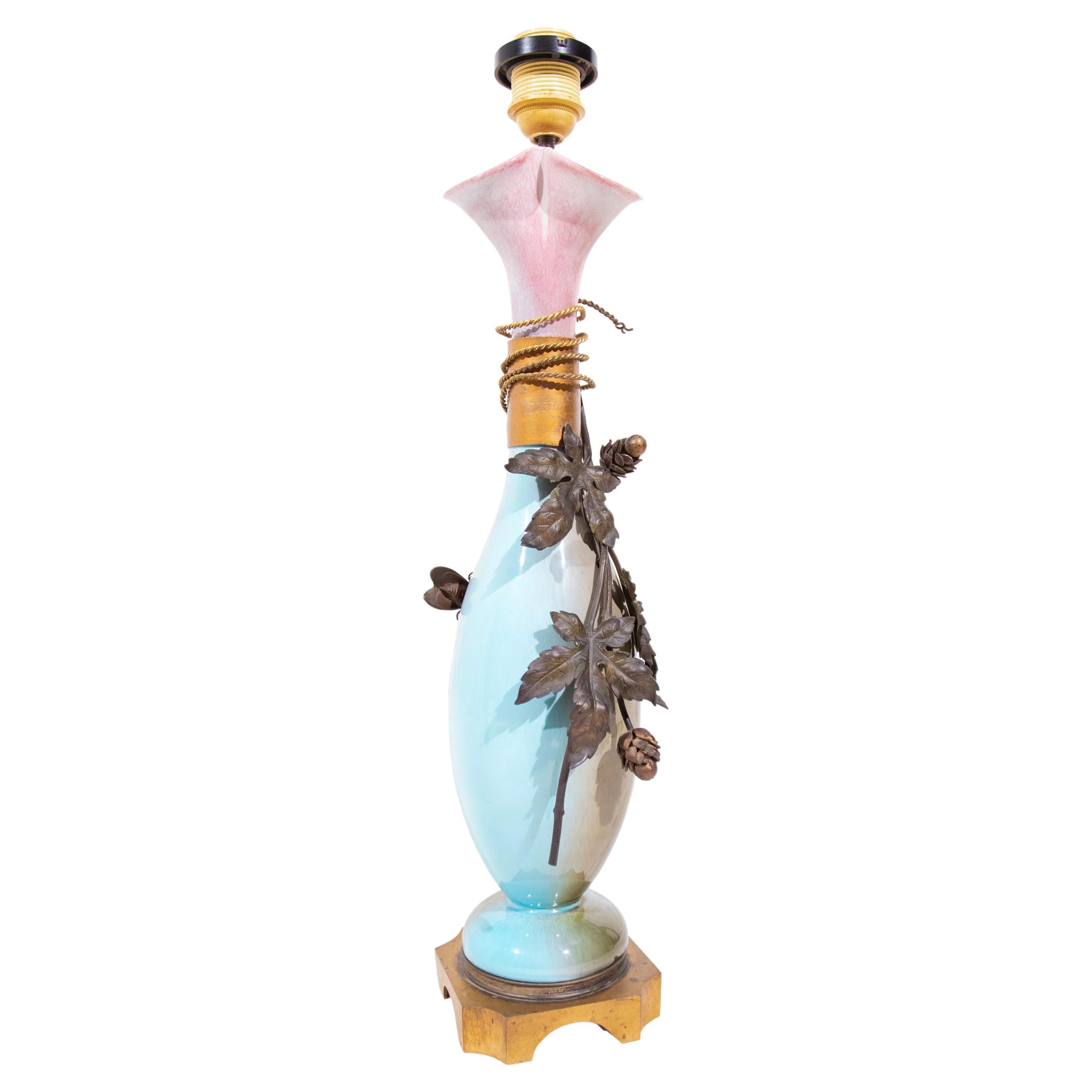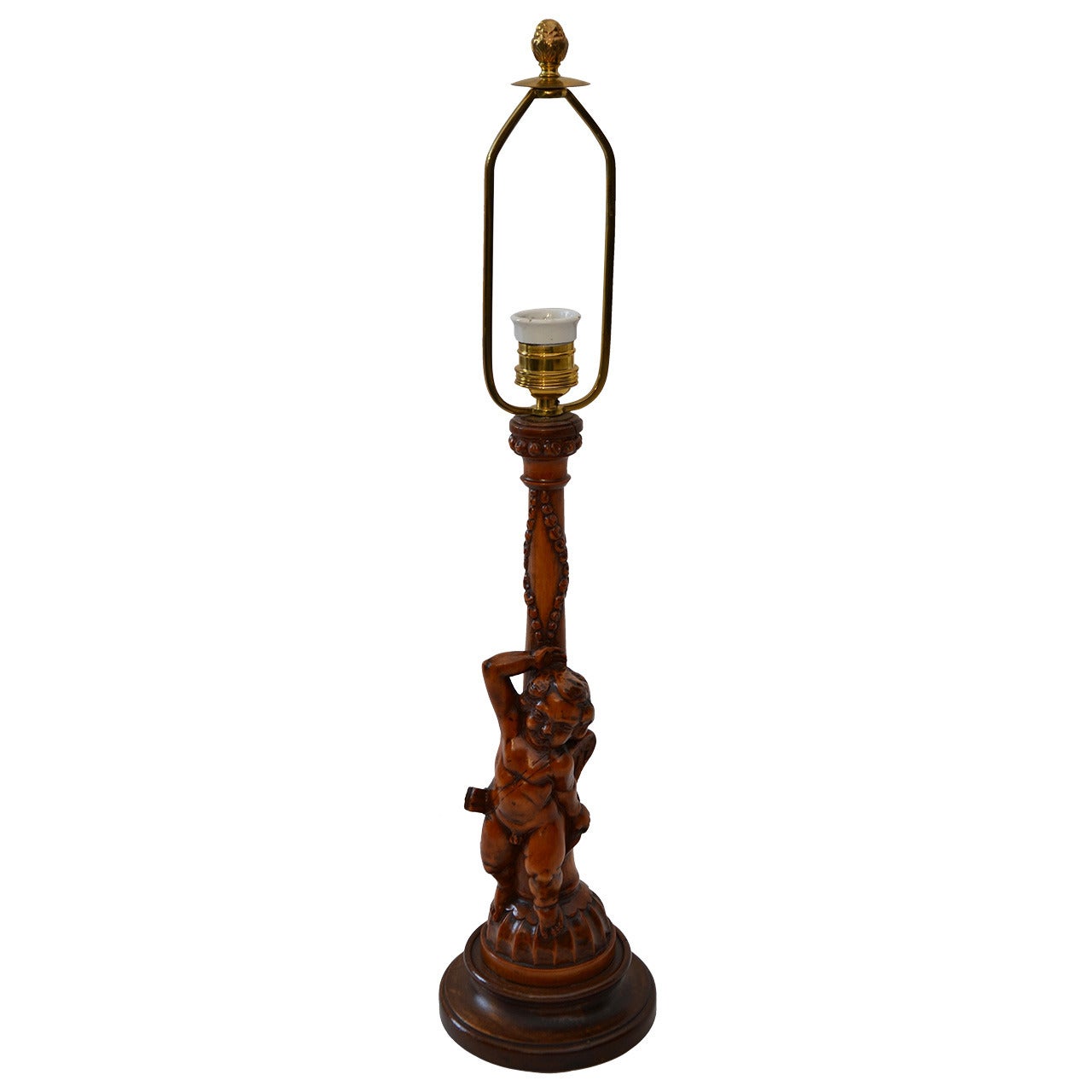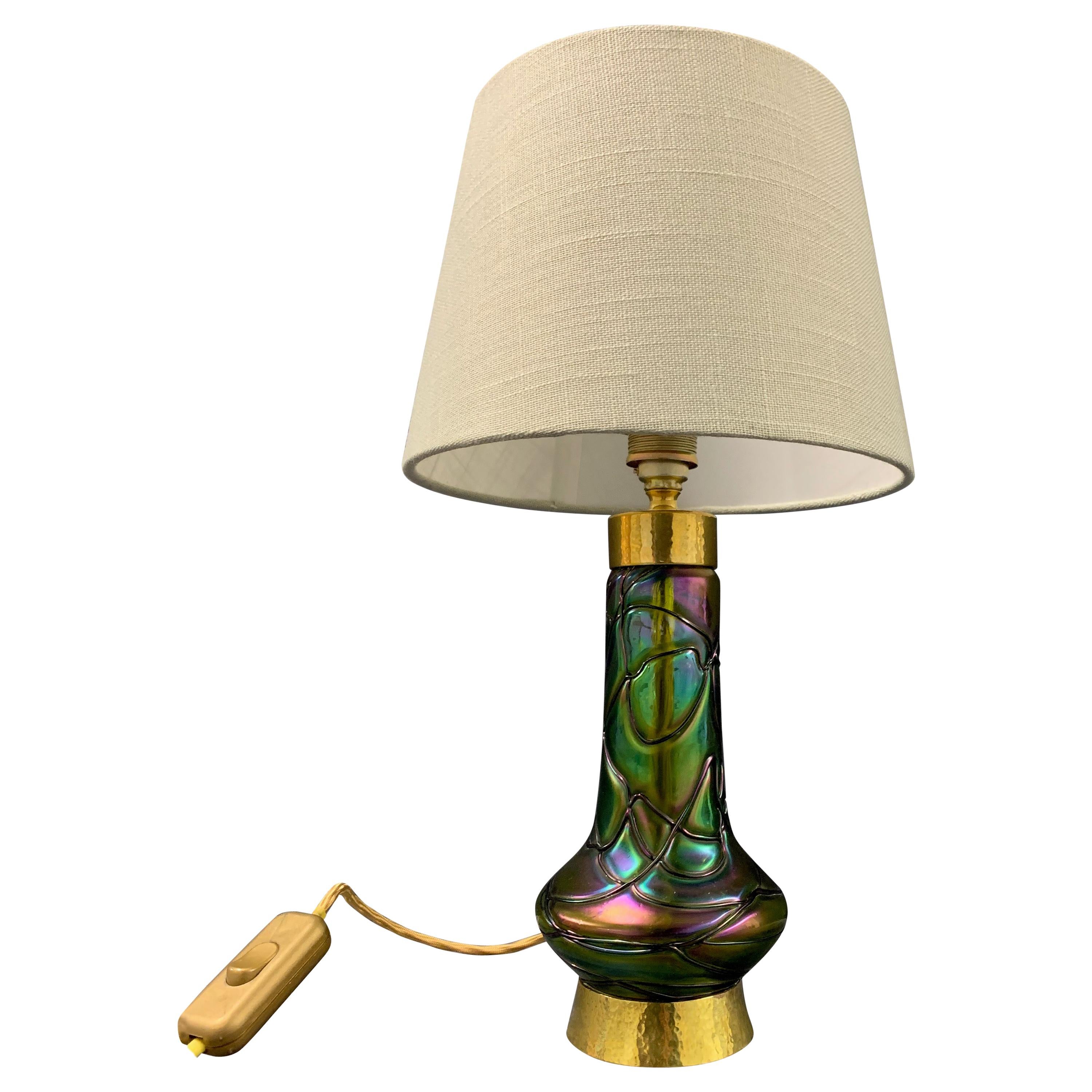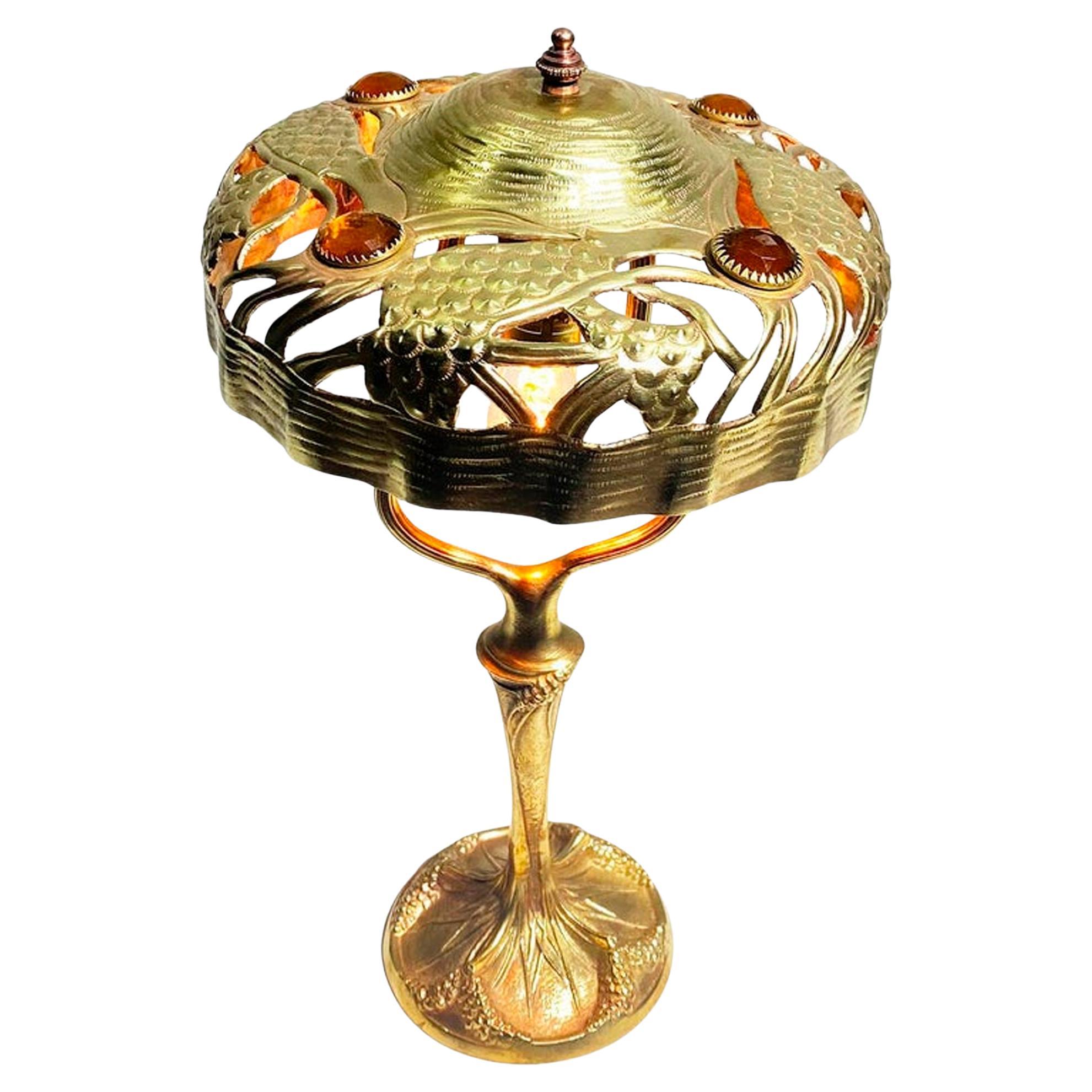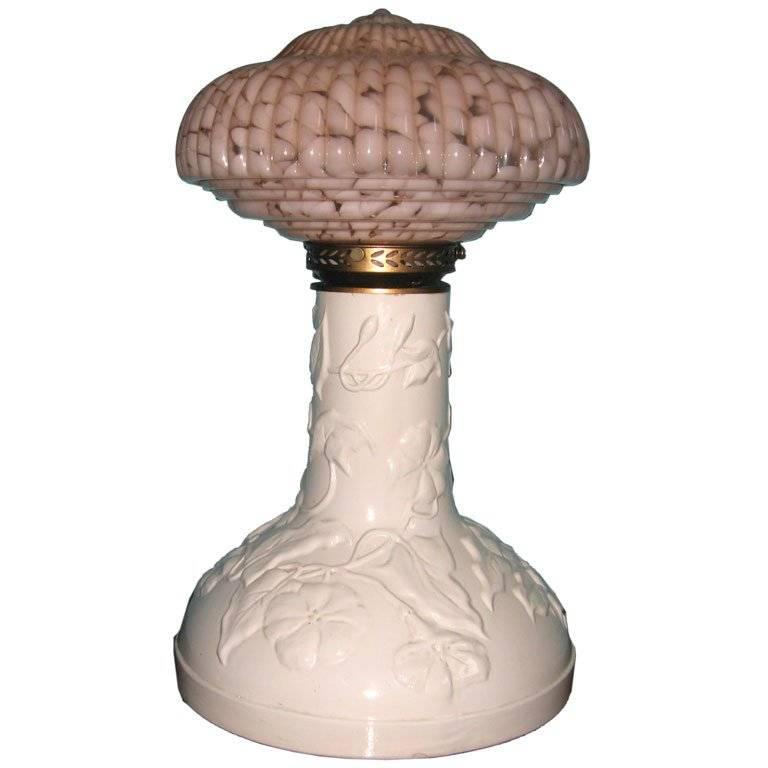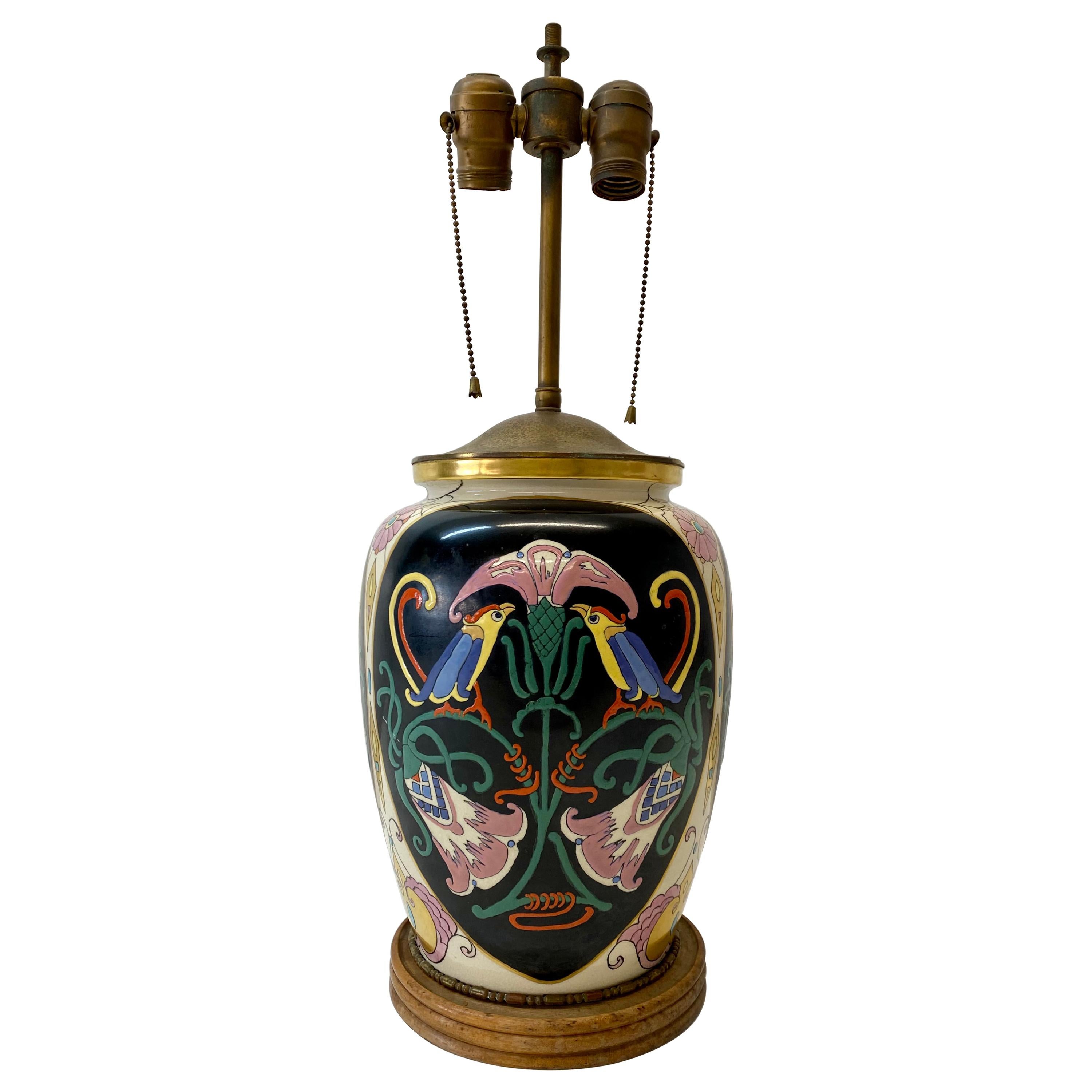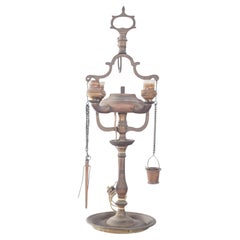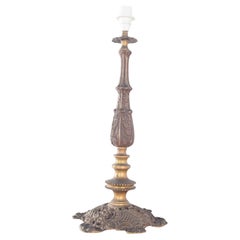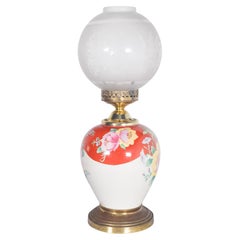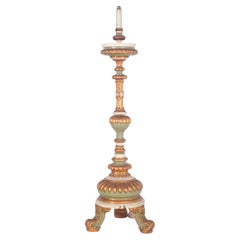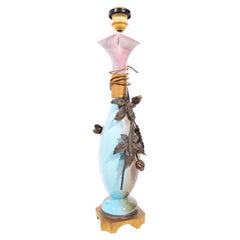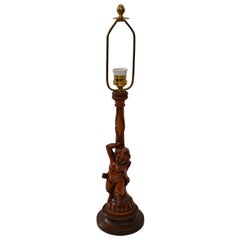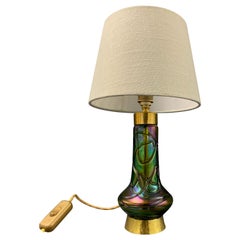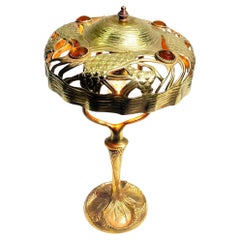Items Similar to Art Nouveau Cigaret Companion
Video Loading
Want more images or videos?
Request additional images or videos from the seller
1 of 7
Art Nouveau Cigaret Companion
$452.77
$722.5137% Off
£335
£534.5737% Off
€376
€60037% Off
CA$626.04
CA$99937% Off
A$687.31
A$1,096.7837% Off
CHF 358.57
CHF 572.1937% Off
MX$8,317.46
MX$13,272.5537% Off
NOK 4,494.16
NOK 7,171.5437% Off
SEK 4,234.68
SEK 6,757.4737% Off
DKK 2,862.87
DKK 4,568.4237% Off
About the Item
This Art Nouveau Cigarette Companion is an exquisite artifact of its time, combining both form and function in a manner characteristic of the era's design principles. Crafted primarily from brass, a material favored for its durability and sheen, the piece stands as a testament to the intricate workmanship and ornamental style of the early 20th century.
The design features two cylindrical brass components that serve practical purposes: one is a match holder, and the other is a cigarette holder, reflecting the period's social customs. These elements are designed with the elegance and symmetry that define the Art Nouveau movement, incorporating flowing lines and organic forms.
Central to the piece is an ashtray, positioned for convenience and ease of use. What truly sets this item apart, however, is the blossoming flower lamp—a delightful representation of the naturalistic motifs prevalent in Art Nouveau. The lamp not only provides illumination but also acts as a decorative element, its light perhaps intended to enhance the ambiance during a leisurely smoke.
Being in working order, this Cigarette Companion is not only a collector's delight but also a functional piece that can still be used today. It embodies the union of artistic beauty and utility, making it a unique and cherished object from a bygone era of opulence and craftsmanship.
- Dimensions:Height: 20 in (50.8 cm)Width: 32 in (81.28 cm)Depth: 22 in (55.88 cm)
- Power Source:Plug-in
- Voltage:220-240v
- Lampshade:Included
- Style:Art Nouveau (Of the Period)
- Materials and Techniques:
- Place of Origin:
- Period:
- Date of Manufacture:1920
- Condition:Wear consistent with age and use.
- Seller Location:Lisboa, PT
- Reference Number:1stDibs: LU4727227720862
About the Seller
5.0
Gold Seller
Premium sellers maintaining a 4.3+ rating and 24-hour response times
Established in 1974
1stDibs seller since 2019
83 sales on 1stDibs
Typical response time: <1 hour
- ShippingRetrieving quote...Shipping from: Santarém, Portugal
- Return Policy
Authenticity Guarantee
In the unlikely event there’s an issue with an item’s authenticity, contact us within 1 year for a full refund. DetailsMoney-Back Guarantee
If your item is not as described, is damaged in transit, or does not arrive, contact us within 7 days for a full refund. Details24-Hour Cancellation
You have a 24-hour grace period in which to reconsider your purchase, with no questions asked.Vetted Professional Sellers
Our world-class sellers must adhere to strict standards for service and quality, maintaining the integrity of our listings.Price-Match Guarantee
If you find that a seller listed the same item for a lower price elsewhere, we’ll match it.Trusted Global Delivery
Our best-in-class carrier network provides specialized shipping options worldwide, including custom delivery.More From This Seller
View AllElectrified Antique Oil Lamp.
Located in Lisboa, Lisboa
Electrified antique oil lamp. With a stable circular base from which rises a shaft decorated with turned details. At the top, there is a central reservoir for the oil, with four sid...
Category
Mid-20th Century Portuguese Mid-Century Modern Table Lamps
Materials
Brass
Golden Metal Table Lamp
Located in Lisboa, Lisboa
Table lamp in gilded metal. Finished in aged bronze, it has a base decorated with floral details and arabesques in relief, harking back to the Baroque style.
The body of the lamp is...
Category
Mid-20th Century Portuguese Mid-Century Modern Table Lamps
Materials
Metal
Mid-Century Table Lamp with Metal and Ceramic
Located in Lisboa, Lisboa
Mid-century table lamp. With metal base and mouthpiece, ceramic body with polychrome flower decoration and ball-shaped glass lampshade.
The base of the lamp has a rounded vase shape ...
Category
Mid-20th Century Portuguese Mid-Century Modern Table Lamps
Materials
Metal
Antique French Large Carved Torch/Lamp with Gilding
Located in Lisboa, Lisboa
Large carved torch with gilding. In richly carved and polychromed wood, with gilded details and shades of soft green and aged white. The piece has a robust vertical structure, made u...
Category
Antique Mid-19th Century French Victorian Floor Lamps
Materials
Wood
Glass and Metal Lamp in the Shape of a Jar
Located in Lisboa, Lisboa
Glass and metal lamp, in the shape of a jar. Polychrome decoration, with a classic and romantic design, inspired by the European style of the 18th century. The main body, in finely d...
Category
Mid-20th Century Portuguese Mid-Century Modern Table Lamps
Materials
Metal
Table Lamp and Two Chandeliers in Pottery and Metal
Located in Lisboa, Lisboa
This elegant set consists of a decorative electrified lamp accompanied by two matching chandeliers, all designed to resemble classic candlesticks. The base and candlestick portions o...
Category
20th Century Portuguese Mid-Century Modern Table Lamps
Materials
Metal
You May Also Like
Exclusive Art Nouveau Table lamp with Bronze Fly and Hop Leaves
Located in Boven Leeuwen, NL
Stunning Art Nouveau / Jugendstil vase lamp decorated with bronze hop plant and fly.
Category
Vintage 1910s French Art Nouveau Table Lamps
Materials
Brass
Carved Wooden Table Lamp
Located in Wien, AT
Carved wooden table lamp
Orignal condition
Category
Antique Early 1900s Austrian Art Nouveau Table Lamps
Materials
Wood
$269 Sale Price
75% Off
Amazing Art Nouveau Table Lamp
By Loetz Glass
Located in Munich, DE
Attributed to loetz. New wiring and lamp socket.
Category
Antique Early 1900s Austrian Art Nouveau Table Lamps
Materials
Blown Glass
Stunning Signed Georges Leleu Art Nouveau Table Lamp
By Georges Leleu
Located in Beirut, LB
Beautiful and unique Art Nouveau table lamp, early 20th century, signed GEORGES LELEU (1883-1961),
Foot and lampshade in brass, decorated with stylized pine and orange stones, Circa...
Category
Early 20th Century French Art Nouveau Table Lamps
Materials
Brass
French Art Nouveau Table Lamp
Located in Los Angeles, CA
This is a very unique lamp. The base is ceramic and has a g Murano glass shade.
Category
Early 20th Century French Art Nouveau Table Lamps
Materials
Ceramic, Murano Glass
$1,170 Sale Price
53% Off
Antique Art Nouveau Ceramic Vase Table Lamp Conversion for Restoration
Located in San Francisco, CA
Antique Art Nouveau ceramic vase table lamp conversion for Restoration
Absolutely gorgeous handmade, hand painted Art Nouveau vase, circa 1890-1910
...
Category
Antique Late 19th Century French Art Nouveau Table Lamps
Materials
Ceramic
More Ways To Browse
Cigarette Holder
Match Holder
Antique Match Holder
Match Holder Antique
Antique Brass Cylinder
Antique Cigarette Holders
Italian Stone Lamp
Lamp No Shade
Lamps Of 1900
Lucite And Ceramic Lamps
Mid Century Mexican Lamp
Mid Century Walnut Lamp Glass
Murano Glass With Gold Flakes
Operating Lamp
Orrefors Blue
Rope Lamps
Swirl Glass Table
Tiered Table Lamp
